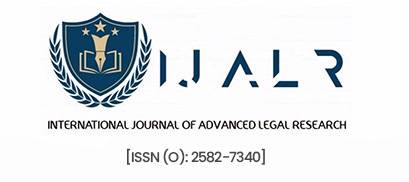Abstract
Artificial intelligence (AI) has transformed the world by supporting humans with their activities while retaining a human-like quality. Despite its many advantages, AI has certain disadvantages, including deepfakes. These AI-generated photos and videos closely resemble actual people, making it impossible to tell them apart from legitimate material. This raises severe concerns since such photographs and videos can be modified or used without the individual’s permission. In certain situations, they are even utilized on pornographic websites, emphasizing the ethical and privacy concerns related with deepfake technology.
Public people like actors, politicians, and celebrities are especially vulnerable to deepfakes since their photos and videos are freely available and well-known. Misuse of AI-generated content can significantly harm their public image. In Amitabh Bachchan vs. Rajat Negi (2022), the defendant modified the actor’s images, videos, and voice for commercial reasons, prompting the court to find an infringement on his personality rights. Similarly, in Anil Kapoor vs. Simple Life India (2023), AI-generated deepfake GIFs were used without permission, indicating the rising abuse of this technology.
To counteract deepfake-related difficulties, numerous governments, including India, have implemented preventative measures. An advisory council has been formed to address legal deficiencies, with a focus on the Information Technology Act of 2000. While Section 79(1) exempts intermediaries from liability, Rule 7 of the IT Rules, 2021 holds them accountable under the IPC of 1860. Sections 66E (privacy breach) and 67, 67A, and 67B (prohibition of obscene content) further limit digital usage. The Digital Personal Data Protection Act, 2023, underlines the necessity for permission in content distribution. Additionally, Sections 38-39 of the Copyright Act of 1957 offer Performer’s Rights, which protect artists from illegal exploitation of their material. Victims should report deepfakes to the authorities within 24 hours by filing a FIR under the IT Act of 2000.
Keywords: Deepfakes, AI-generated, Infringement, Information Technology
INTRODUCTION
Artificial Intelligence (AI) has taken the world by a storm, giving the person to help them in their work and give it a little human touch. Even though AI being a helpful tool it has it’s disadvantages one of the most prominent are the Deepfakes, these are the AI generated videos or pictures of an individual that looks just like them. These AI generated pic looks so real that it becomes impossible to differentiate like in the Met Gala of 2024 a lot of pictures of the celebrities were circulated and they looked so real, as it the celebrity themselves. This becomes a disadvantage as these pictures or videos could be morphed and be used without the consent of the person and sometimes can be used on pornographic websites.In this the most vulnerable are the public figures like actor, actresses, politician etc. as their pictures or video are easier to find and they are recognizable by the people and this could adversely affect the image of the celebrity in the public eye.

